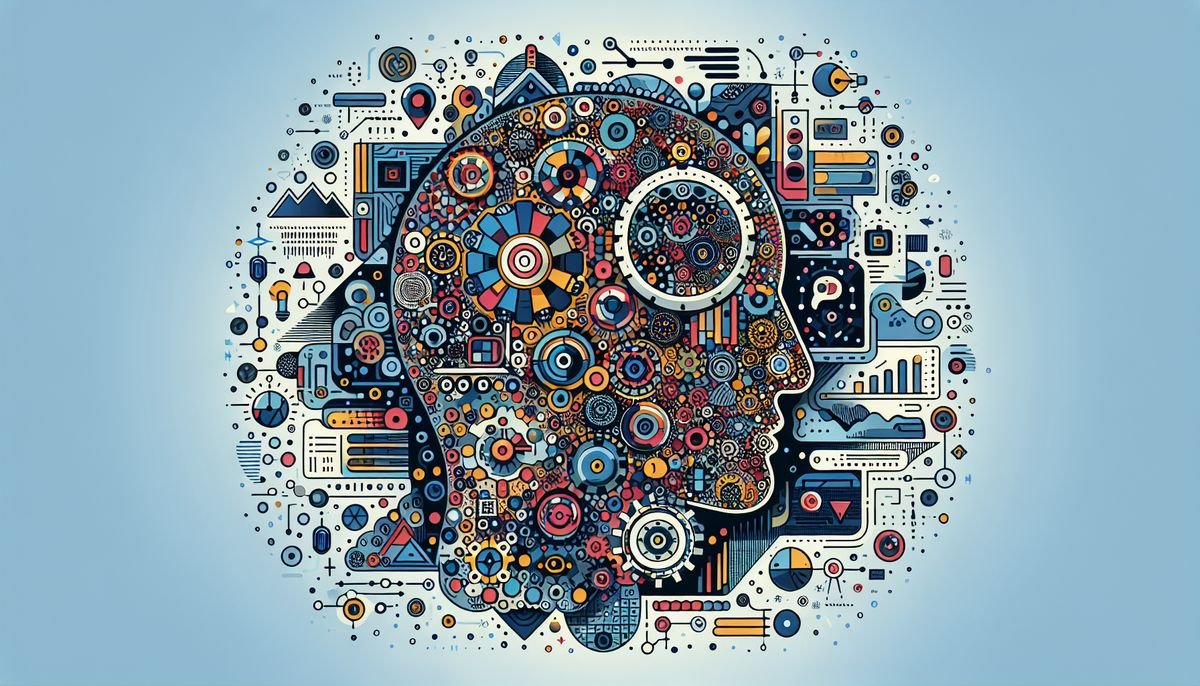In the realm of artificial intelligence, diffusion models have emerged as a groundbreaking force, particularly in the sphere of creative AI applications. These models are not only enhancing the capabilities of businesses to generate unique content but are also transforming the landscape of business innovation. By leveraging the power of diffusion models, companies are now able to push the boundaries of creativity, optimize operations, and offer highly customized consumer experiences. This article explores how diffusion models are revolutionizing creative AI applications in business, offering insights into their potential and practical applications while also addressing the ethical considerations involved.
Key Takeaways
- Diffusion models are propelling a new wave of innovation in business, enabling the creation of unique and compelling content across various domains such as art, advertising, and product development.
- Businesses are utilizing diffusion models to enhance customer experiences through personalized interactions, streamline operations, and reduce costs, thereby gaining a competitive edge in the market.
- The integration of diffusion models in creative processes raises important ethical questions, necessitating a thoughtful approach to the use of AI-generated content and its implications for authenticity and authorship.
The Rise of Diffusion Models in Creative AI: Transforming Business Innovation
Understanding Diffusion Models and Their Capabilities
Diffusion models are at the forefront of a transformative wave in creative AI, offering unprecedented capabilities in generating high-quality data. These models operate by progressively adding noise to a dataset and then learning to reverse this process, effectively creating new, coherent samples from a noisy starting point. Stable Diffusion is a prime example of such a model, which has gained significant attention for its ability to evolve random noise into clear, usable data samples, particularly in the realms of art, design, and entertainment.
To harness the full potential of diffusion models, effective conditioning is key. This involves leveraging features for fine-grained control and diverse sample generation. Recent advancements have introduced multi-conditioning using cross-attention, which combines attributes and semantic masks to enhance image quality and controllability. Moreover, strategies like incorporating perceptual-focused loss weighting in the latent space have shown to improve model performance significantly.
The Safe Latent Diffusion (SLD) method represents a notable development in addressing biases in training data. It suppresses inappropriate image parts during the diffusion process, ensuring high-quality outputs without compromising text alignment.
As businesses look to integrate these models into their operations, understanding these capabilities and advancements is crucial for driving innovation and maintaining a competitive edge.
Real-World Applications: From Art to Advertising
The integration of diffusion models into creative AI has marked a significant shift in how businesses approach innovation and content creation. Exceptional AI image generator tools, such as DALL-E and Midjourney, are now at the forefront of producing visuals that are not only unique but also strikingly realistic, a crucial factor for captivating marketing materials.
In the realm of advertising, these tools offer unprecedented customization and control, allowing marketing teams to produce creative images quickly and cost-effectively. The ability to fine-tune results to align with specific brand guidelines or campaign themes is particularly valuable, resonating more deeply with target audiences.
The leap in quality provided by advanced AI tools is pushing the boundaries of realism in generated images, making them indistinguishable from photographs. This is transforming the visual content landscape, enabling marketers to create deeply immersive experiences.
Furthermore, the trend towards hyper-realistic imagery and interactive content is not just a fleeting phenomenon. It is a clear indication of the future direction of visual marketing, which will focus on ultra-realistic, dynamic, and scalable personalized content. The ethical use and tight integration with platforms are also becoming increasingly important to transform content creation and engagement.
Navigating the Ethical Landscape of AI-Generated Content
As businesses increasingly adopt diffusion models for generating content, the ethical implications of such technology come to the forefront. Authenticity and credibility are at the core of these concerns. The ability of AI to create content that is indistinguishable from human-generated work raises questions about the originality and integrity of digital media.
Transparency in the use of generative AI is another major ethical consideration. Businesses must disclose the use of AI in their content creation processes to avoid misleading consumers. This is not only a matter of ethical responsibility but also one of maintaining consumer trust.
The ethical use of AI-generated content is not just about adhering to legal standards but also about fostering a culture of trust and responsibility within the digital ecosystem.
To address these issues, a set of ethical guidelines is emerging, focusing on:
- Responsibility and accountability in content generation
- Ensuring fairness and avoiding bias
- Maintaining transparency and trust with consumers
- Respecting copyright laws and personal rights
These guidelines are essential for businesses to navigate the complex ethical landscape and to ensure that AI’s creative capabilities are harnessed responsibly.
Leveraging Diffusion Models for Competitive Advantage
Customizing Consumer Experiences with Generative AI
In the realm of business innovation, diffusion models are playing a pivotal role in customizing consumer experiences. Generative AI, particularly through the use of models like Stable Diffusion, is enabling a new era of personalized marketing and customer engagement. For instance, businesses are now able to generate personalized product recommendations and targeted marketing campaigns that resonate deeply with individual consumer preferences.
- Personalized Product Recommendations: By analyzing customer data, AI can suggest products that align with user interests.
- Targeted Marketing Campaigns: AI-driven campaigns ensure that marketing messages are tailored to the consumer’s behavior and needs.
- Customized Customer Support: Chatbots, powered by generative AI, can offer support that feels more personal and relevant.
The integration of generative AI into business practices not only enhances the customer experience but also streamlines operations, making it a dual-edged sword for competitive advantage.
The use of generative language models to create personalized product descriptions is a testament to the efficiency and precision that AI brings to the table. By leveraging customer data and behavior, these models craft descriptions that are not just relevant, but also engaging, thereby augmenting sales and customer satisfaction.
Optimizing Operations and Reducing Costs
In the dynamic landscape of business technology, diffusion models stand out as a beacon of efficiency and cost-effectiveness. These models, which apply a gradual noise reduction process to generate high-quality outputs, are not just about creating stunning visuals; they are a pivotal tool in streamlining business operations. By automating manual tasks, diffusion models enable employees to allocate their time to more strategic initiatives, fostering an environment where creativity and innovation can thrive.
- Cost Optimization: Generative AI, including diffusion models, can automate tasks that are manual or repetitive. This not only saves time but also leads to significant cost savings, allowing businesses to reallocate resources more effectively.
- Enhanced Efficiency: The acceleration of tasks such as content creation and data analysis translates into tangible time and cost savings. For instance, generative AI can swiftly generate personalized marketing campaigns or product descriptions, which are essential in driving sales in sectors like eCommerce.
- Quality and Consistency: The use of generative AI can improve the general quality and consistency of content, which is crucial in customer-facing aspects of business such as customer service and product presentation.
By leveraging generative AI for business, companies can solve complex problems more efficiently, leading to a decrease in production costs and an overall improvement in material quality.
The integration of diffusion models into business processes is not just a trend; it’s a strategic move to future-proof operations. As these models become more sophisticated, they will continue to unlock insights into company business processes, reduce labor costs, and optimize operations across various industries.
Future-Proofing Businesses with AI-Driven Creativity
In the rapidly evolving landscape of business technology, diffusion models stand out as a beacon for future-proofing enterprises. These models, harnessing the power of generative AI, are not just a trend but a strategic enabler for innovation and adaptability. As we look towards 2024, the integration of AI into business operations is not just advisable; it’s imperative for staying competitive in a market where change is the only constant.
The capabilities of generative AI extend across various domains, enabling businesses to not only enhance their creative processes but also to reimagine their operational models. By leveraging AI, companies can generate novel ideas, optimize workflows, and create personalized customer experiences that were once beyond reach.
The transformative impact of diffusion models can be seen in the following areas:
- Custom Solutions: Tailoring products and services to meet unique market demands.
- Operational Efficiency: Streamlining processes to reduce costs and increase productivity.
- Innovative Marketing: Crafting compelling campaigns that captivate audiences.
Embracing these technologies today means building a foundation that can withstand the uncertainties of tomorrow. Companies that recognize the importance of AI-driven creativity are not just surviving; they are thriving by setting new standards and leading their industries into the future.
Conclusion
As we have explored throughout this article, diffusion models are at the forefront of a creative revolution in AI applications for business. These models are not only enhancing the capabilities of generative AI but are also redefining the boundaries of creativity and innovation. By enabling the generation of high-quality, diverse content, diffusion models empower businesses to explore new horizons, from marketing and product design to operational efficiency and customer engagement. The transformative impact of these models is evident across various industries, challenging traditional practices and offering unprecedented opportunities for growth and competitive advantage. As the technology continues to evolve, it is crucial for businesses to stay informed and consider how they can integrate diffusion models into their strategies to harness the full potential of creative AI.
Frequently Asked Questions
What are diffusion models in the context of creative AI?
Diffusion models are a type of generative AI that can create high-quality images, music, or other forms of media from a set of data inputs. They work by gradually learning to reverse a diffusion process, which transforms a piece of content from a random noise pattern into a coherent output based on given prompts or conditions.
How can diffusion models be used to gain a competitive advantage in business?
Businesses can use diffusion models to customize consumer experiences with highly personalized content, optimize operations by automating creative tasks, and innovate in product and service development. This can lead to more engaging marketing campaigns, cost reductions, and staying ahead of the curve in terms of creativity and innovation.
What ethical considerations should businesses keep in mind when using diffusion models?
When using diffusion models, businesses should consider issues such as intellectual property rights, the potential for deepfakes, the authenticity of AI-generated content, and the impact on creative professions. Transparency with consumers about the use of AI-generated content and adherence to ethical guidelines are essential to maintain trust and integrity.



